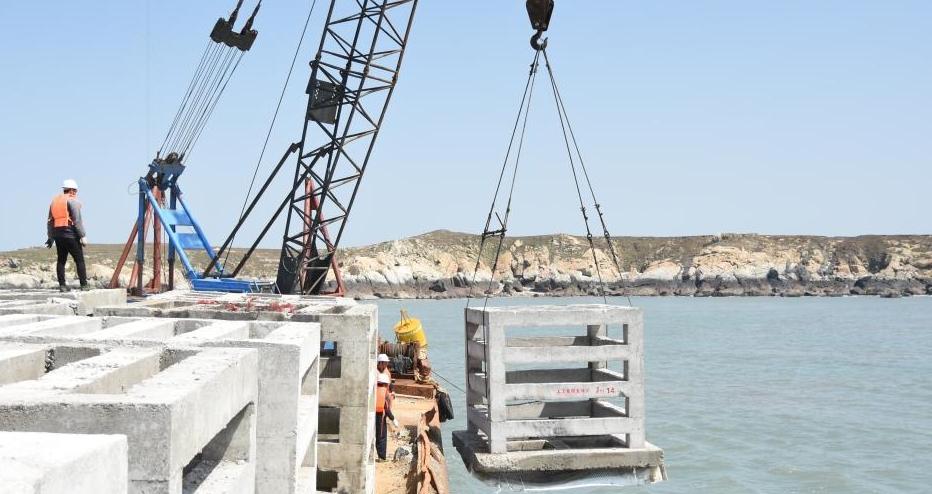Building reef shelters for marine fish in east China
Xinhua, April 03, 2024 Adjust font size:
An artificial reef cube is lowered into the nearby waters of Nanri Island in Putian City, southeast China's Fujian Province, Feb. 18, 2024. (Xinhua)
Fishermen in the city of Putian, east China's Fujian Province, are doing something very cool out at sea -- they are using giant-but-hollow cement Rubik's cubes to build "reefs" to shelter fish.
Multiple holes on the surface of such cubes allow fish to easily burrow into these artificial reefs, making them suitable as places to live, breed, and hide from potential predators. These efforts are about more than just protecting the fish, as they also contribute to curbing illegal fishing, safeguarding local fishery resources, and alleviating seabed "desertification," said Wang Qinghua, from the marine fishery station of Nanri Township.
A huge transport engineering ship is used to transport hundreds of reef cubes, which are then gradually lowered into the nearby waters of Nanri Island, Putian. Machinery arms handle the cubes in a process resembling the seizing of toys via a gigantic claw machine. Once the cubes have been released, crews dive into the water to check the stability of the cubes, allowing for adjustment of release positions to prevent or correct any tilting that may occur.
"As the seawater slowly reduces the alkalinity of the cement, small algae will attach to and grow on the cubes that form the artificial reef, thereby attracting more fish to it. Additionally, a variety of benthic organisms and corals will also attach to the cubes, forming a distinct ecosystem with the artificial reef as its foundation," explained Yan Zhihong, head of the water technology station of Putian's Xiuyu District.
But, just how effective are these efforts to provide fish with viable reef structures?
In order to monitor and manage fish stocks and such artificial reef areas, Nanri Island launched an underwater online observation program. "We have monitors on the reefs that are connected to the internet to provide real-time monitoring of the living conditions of the fish and measure water temperature, oxygen levels, changes in currents and so on," Yan said.
These monitoring efforts revealed that the artificial reefs are now thriving habitats for a diverse range of colorful fish species. Some large fish even approached the surveillance cameras, seemingly out of curiosity. "We discovered a variety of fish, including high-quality crab-like blunt-toothed sturgeon and Japanese sturgeon of medium and large size," Yan added.
During the 1990s, the waters surrounding Nanri Island contained abundant marine fishery resources, with its crystal-clear waters home to significant numbers of shrimp and fish. However, with an increasing number of fishing boats out at sea, some fishermen responded by using illegal fishing nets that were able to trap both adult and young fish, causing damage to reproductive capabilities in the area.
"As a result, the fish population significantly decreased, and smiles vanished from the faces of our fishermen," said Chen Yacong, a local fisherman who can still vividly and emotionally recall the golden days of the past.
Thanks to more than 2,700 reef cubes placed in nearby waters since 2012, the local marine environment is on the mend. "Over the past few years, there has been an increase in the number of fish, which means we can now earn more money without having to spend as much time on the water," Chen said.
In late 2018, the waters surrounding Nanri Island were designated as Fujian's first national-level marine pasture demonstration area.
Experts and researchers who assessed this area found that the biomass and resource density of the reef area had both increased significantly after the casting of the artificial reef, while the reef area is also able to effectively shelter juvenile fish of economic species. This means the high-tech reef building program has proven to be a beneficial solution -- both economically and ecologically.
"We are also continuing our efforts to breed more fish fry and release them in the reef area. From 2020 to the end of 2023, over 80 million fry of all kinds of fish were released in these waters," said Yan.


